In September 2014, I set out to summit Ben Nevis on the easy Mountain Path route. Since I was pressed for time, I chose to run/powerhike and made the 16km trip up and down the highest mountain in the UK in less than 4 hours, half of what it might take a typical hiker.
After an early-afternoon check-in at our hotel in Fort William (where my wife remained with a good book) and stopping at a small village shop to stock up on water, I drove to the Achintee parking lot. This is the location of the Ben Nevis Inn, and also of the gate that marks the official start of the Mountain Path, the most popular (and easiest) route up Ben Nevis. Easy is of course a relative word, since I was still looking at an elevation gain of around 1300m and almost 16km round-trip.
Since it was already a quarter to two and I intended to be back down in time for dinner with the wife, I was determined to run at least part of the climb. My running training during the several months leading up to the wedding had been lacking, but here I was was wearing running shorts, a short-sleeved shirt and a fairly minimal running backpack with some cold weather and emergency gear, so I thought I might as well try. I briefly talked with a fellow traveler near the gate who seemed to be more optimistic about my running abilities than I was, but I appreciated his vote of confidence.
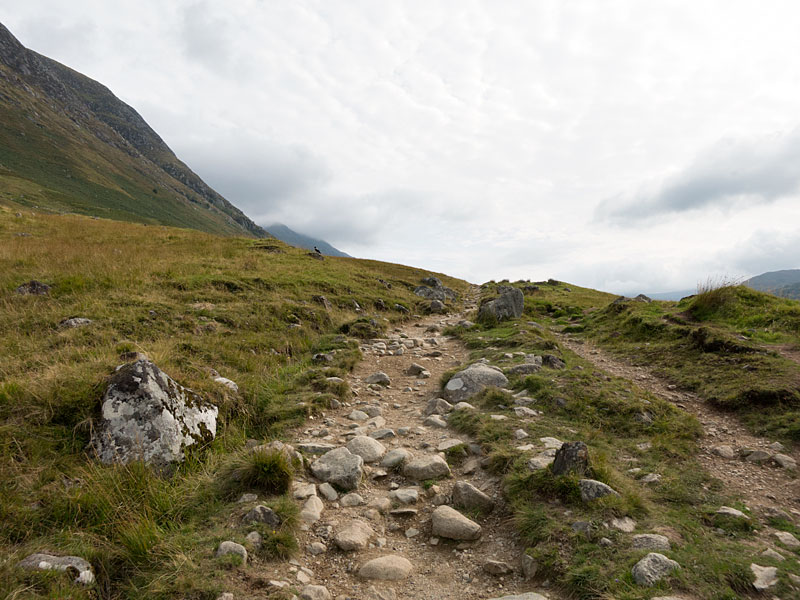
I set off at an easy jog, but within minutes I had to admit defeat on the running front. My heart rate was already sky high, and I didn’t think this level of effort would be sustainable all the way up. So instead I settled into a power hike, albeit still at a hard effort. The trail on the first few kilometers was a fairly traditional mountain path; composed of dirt sections but also with a lot of irregular stone steps. Most people I met here were already heading down. The upper reaches of the mountain were obscured by clouds, however the temperature was still mild and there was no indication of worse weather moving in.
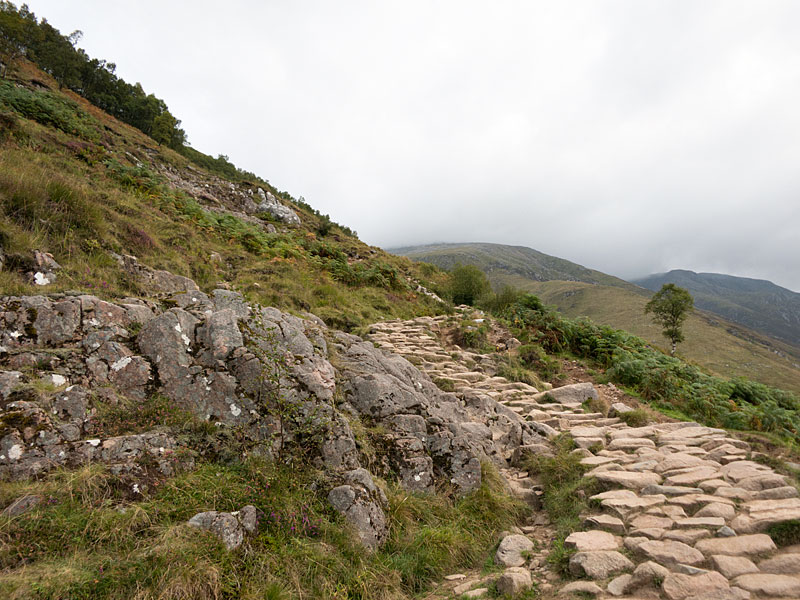
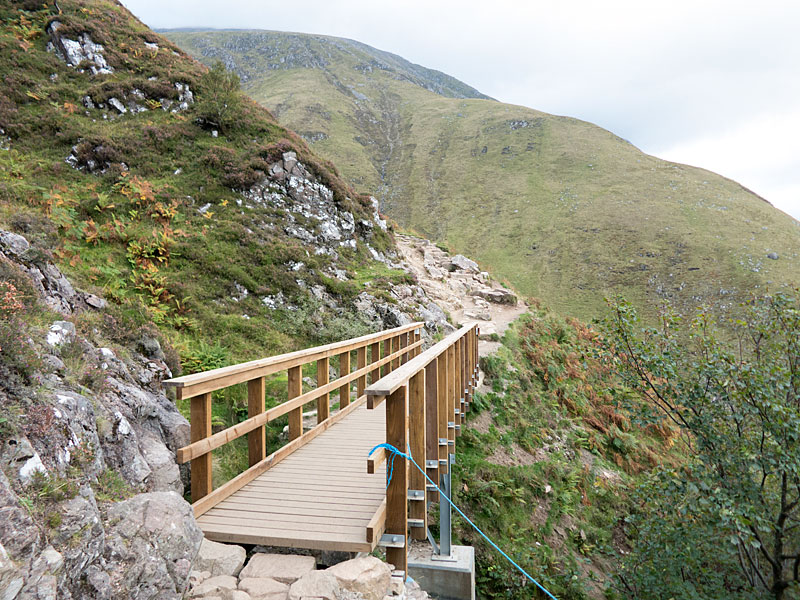
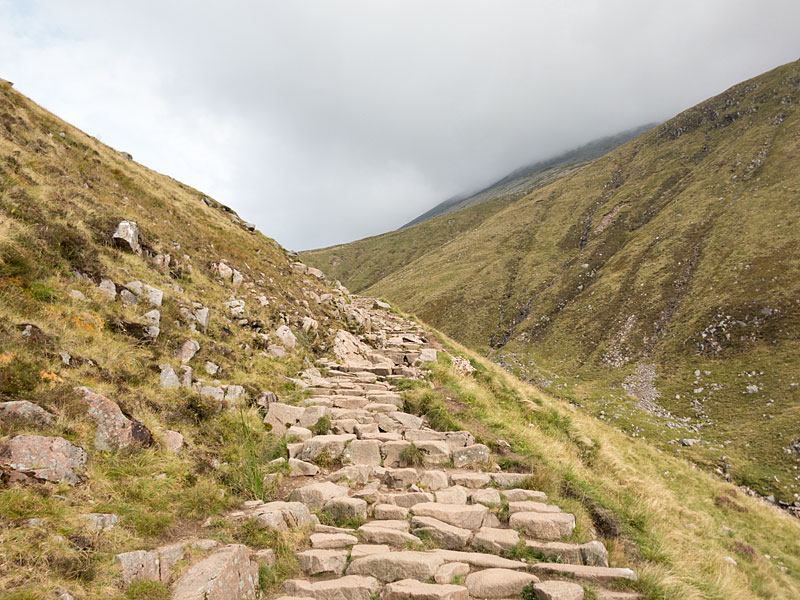
After about three quarters of an hour, I reached a plateau that overlooks Lochan Meall An T-Suidhe (“Halfway Lochan”) at 507m of elevation. Oddly enough, despite the name, half-way would still be a little further. Here, the path was smoother and less steep. I tried to quicken the pace, but once again my heart rate didn’t allow me to run continuously.
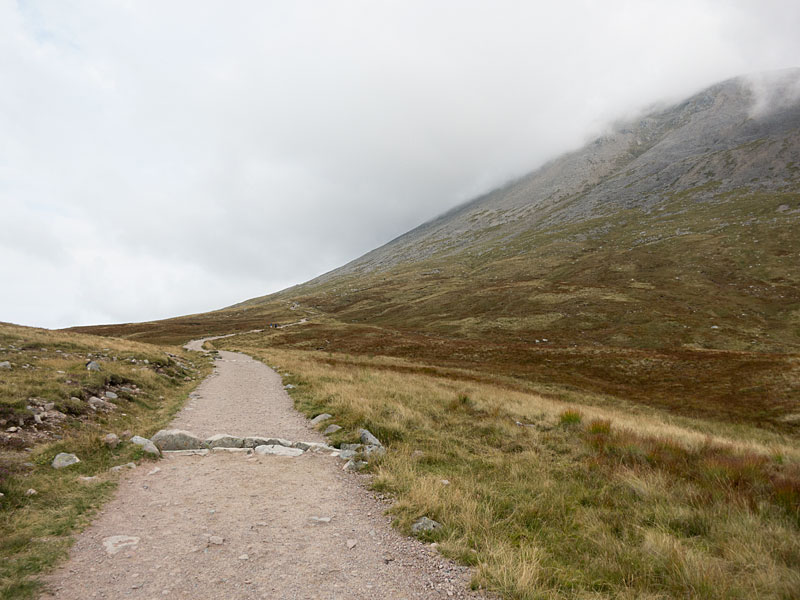

The climb was still fairly gentle, but about 70 minutes (or 5km) into the hike, things got steeper and rockier. There were no more human-made stone steps, and instead I was now walking on a typical mountain trail with a mixture of small gravel and large stones. I quite like this kind of surface, because it is more challenging. The small stones can be slippery if you don’t fine tune your effort; and the larger rocks can either be used as solid foot steps or need to be contoured around. Either way, each step is a multitude of small decisions involving optimal foot placement as well as keeping your core engaged so you propel yourself forward in an efficient manner.
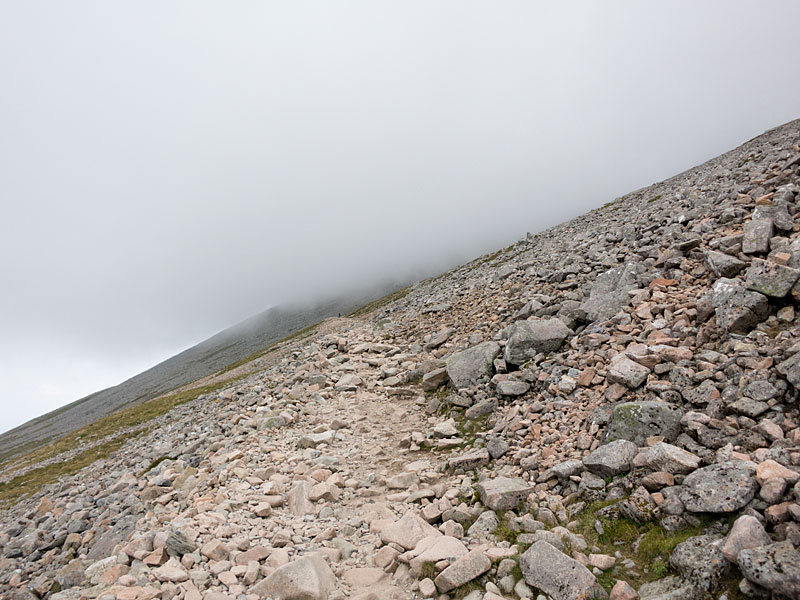
The majority of people I met here were still coming down, but I started catching up with a number of people who were moving much slower and presumably had started sometime in the morning. For them, this truly was an all-day outing.
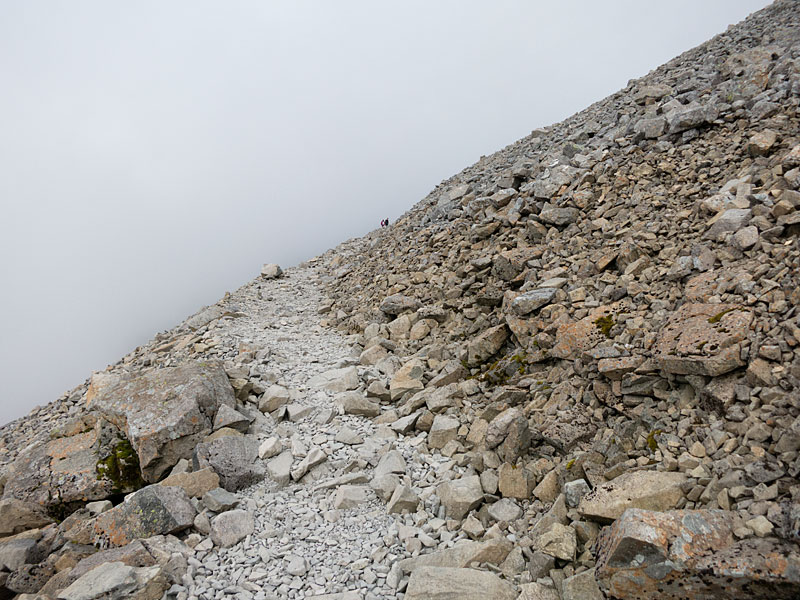
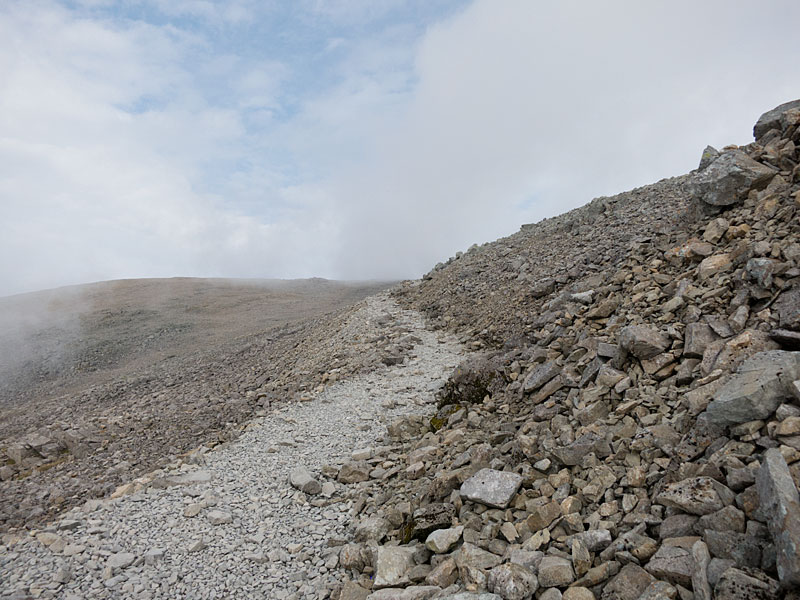
I was now closer to the cloud cover, but visibility was still decent. As I got closer to the top, cairns started appearing, presumably to help people find the way in white-out conditions, but the trail was still very visible so that it would have been quite hard to lose. I was still pushing my pace, but was beginning to feel the effort. At one point, my leg muscles were starting to cramp, but some quick stretching and massaging got rid of the cramp and I hiked on without much time lost.
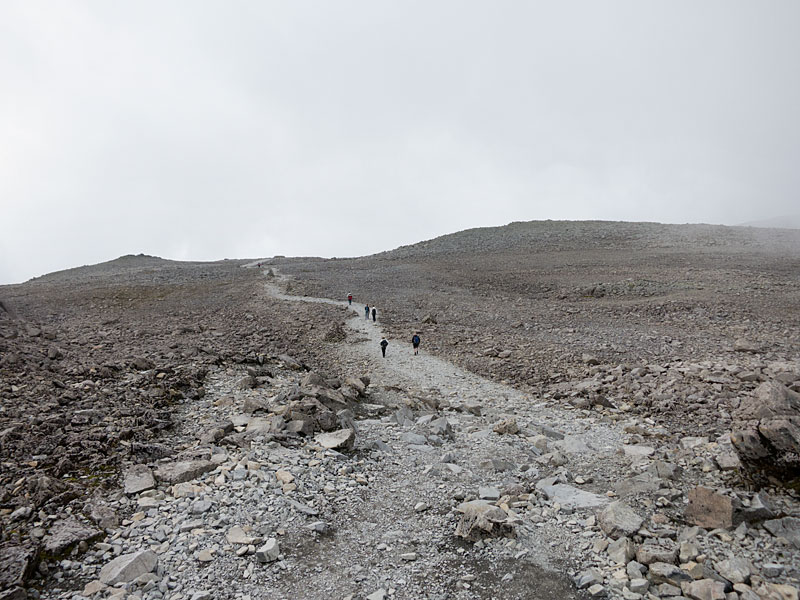
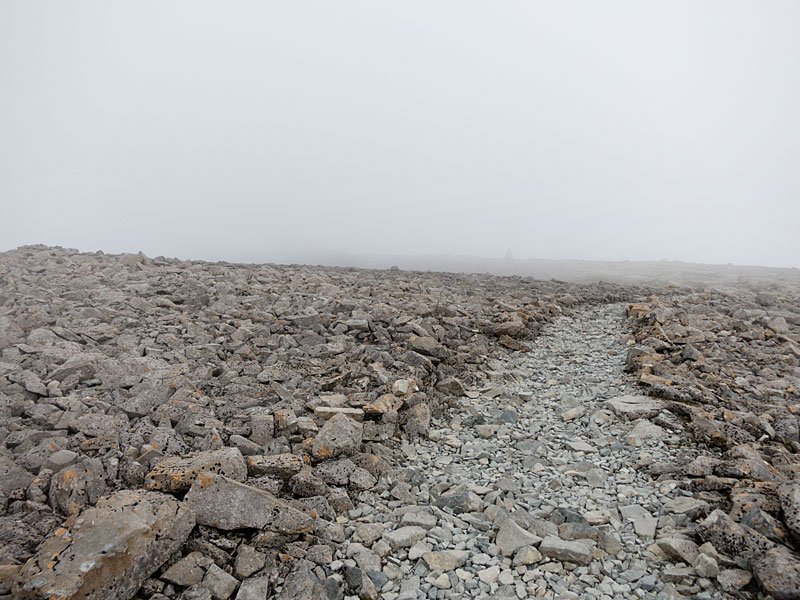
After about 2 hours, I reached the top. The sky was all white and apart from rocks and several dilapidated structures, no views were to be had. Since I was still in shorts and a shirt, I had to decide between layering up for a rest, or staying mobile. I decided on the latter, and therefore just spent five minutes at the top.
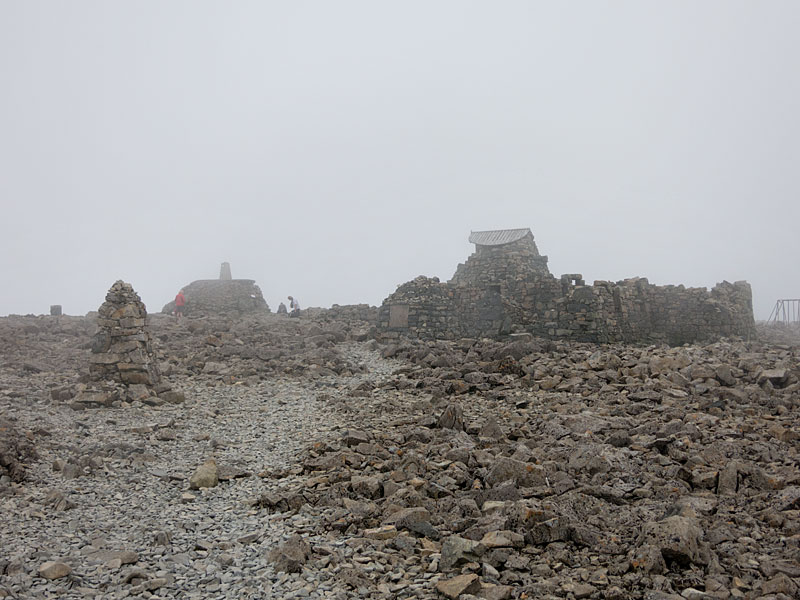
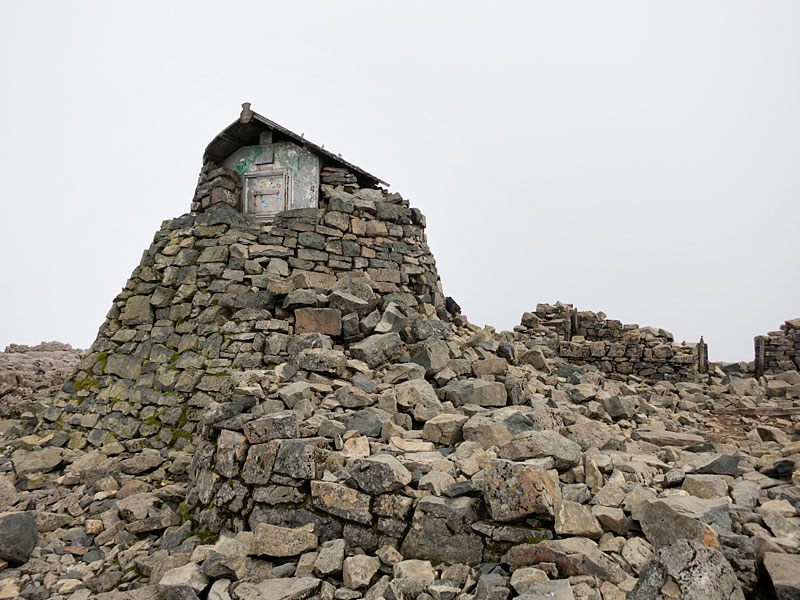
The way down was unremarkable. I only ran the smoother parts of the trail, and settled for a quick walk whenever things got rockier or more irregular. I would probably have been fine running more, but since this was an unusually high effort for me at the time, I didn’t want to subject my knees to exaggerated punishment.
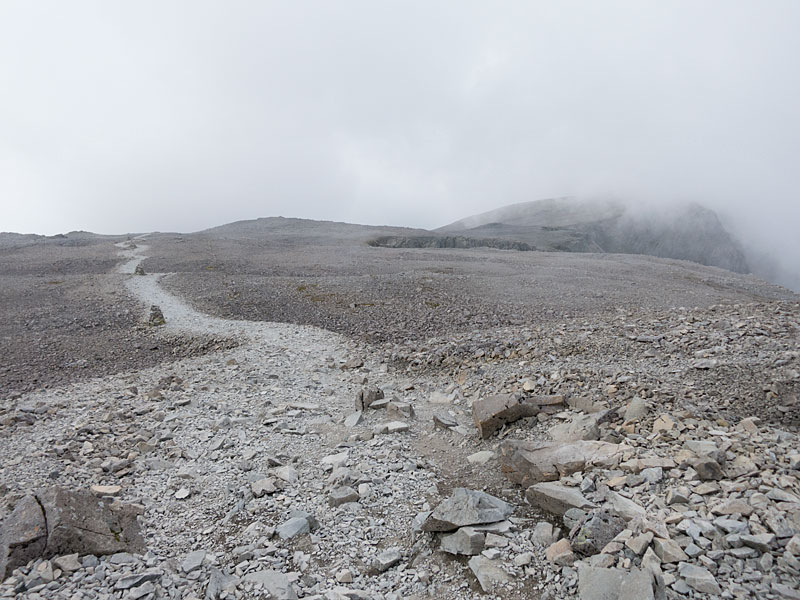
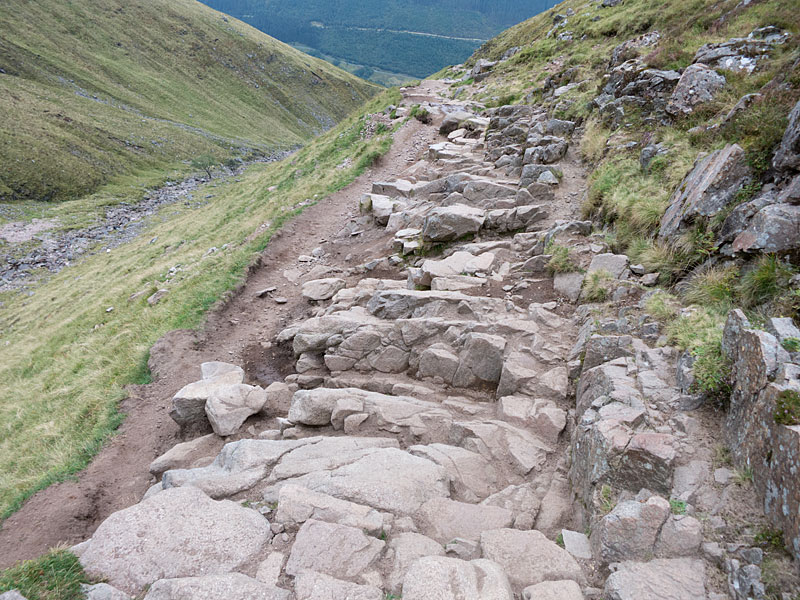
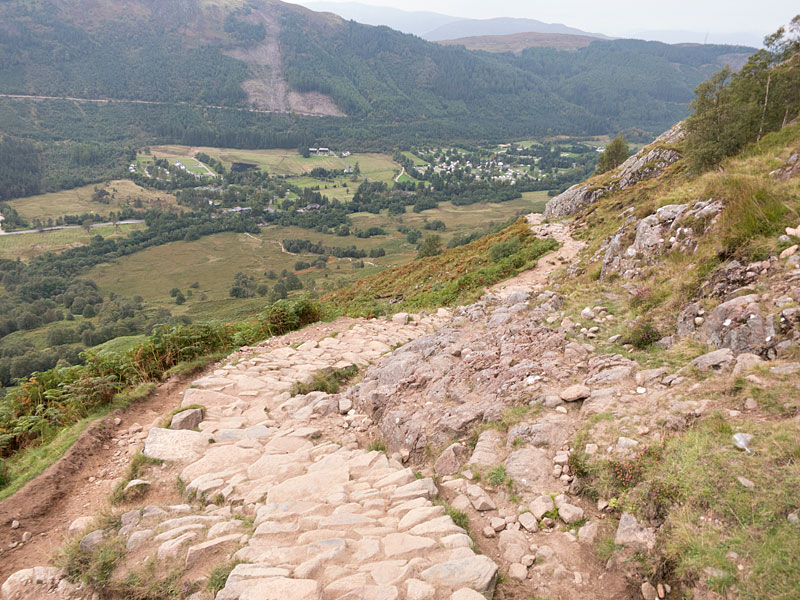
I was back at the car at 17:34, about three hours and fifty minutes after I set off.
According to my GPS watch, the exact time was 3:48:44 for a total distance of 15,78km. The total elevation gain was 1.333m. My overall pace was 14:29 min/km, which looks quite pedestrian, but considering that I reached a maximum heart rate of 179 and maintained an average of over 160pm on the way up, the effort certainly was anything but pedestrian.
Here’s my Strava activity, which uses a different algorithm to determine that 3h32 of “moving time” over 15.7km were good for a 13:26/km pace and an “epic suffer score” of 335.